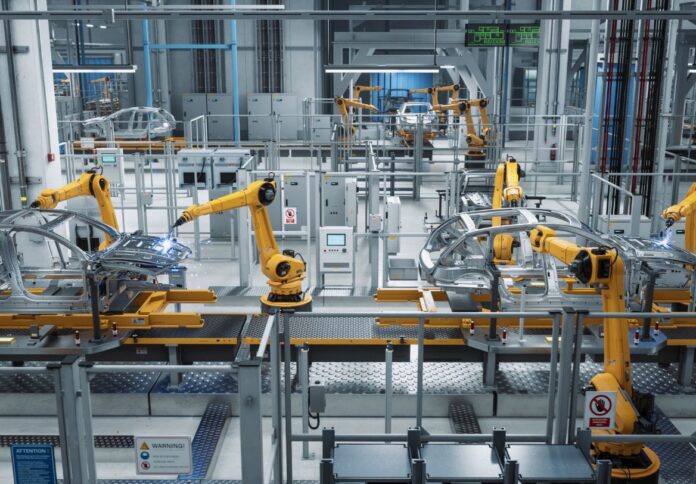
China’s manufacturing industry experienced a slight setback in October, with the latest Purchasing Managers’ Index (PMI) data from Caixin and S&P Global revealing deterioration in production as a result of slower sales.
The headline seasonally adjusted PMI stood at 49.5 at the beginning of 2023’s fourth quarter– a fall from September’s 50.6 and below the neutral 50.0 threshold.
The decrease, albeit marginal, marks the first one since July and comes as a result of a renewed fall in manufacturing production during October.
Though only slight, the decline contrasted with modest expansions in the prior two months. Companies that cut output levels often linked this to relatively muted sales, particularly from abroad.
Purchasing activity also fell for the first time since July, dragged by lower production and relatively muted client demand.
Manufacturing companies also made a greater usage of current stocks, partly to help control costs, which led to a moderate decline in inventories of inputs.
On the other hand, weaker-than-expected sales and the delayed shipment of goods led to the strongest rise in inventories of post-production items since September 2015.
“Manufacturing demand expanded slowly, and supply contracted. Total new orders increased for the third consecutive month, but the pace of growth slowed for two months in a row. External demand continued to decline, with new export orders falling for the fourth straight month. As a result, manufacturers reduced their supply, leading production to shrink for the first time in three months,” said Dr Wang Zhe, senior economist at Caixin Insight Group.
Companies also cut staffing levels for the second straight month in October, with the rate of job shedding the quickest since May.
Furthermore, work backlogs continued to expand slightly, with some firms linking this to recent increases in new work and pressure on capacity.
Business optimism continued to slip at the beginning of the last quarter of the year, with the corresponding gauge hitting the lowest since September 2022 despite remaining in expansionary territory.
“Overall, manufacturers were not in high spirits in October. Supply, employment and external demand all fell, while domestic demand expanded at a slower pace. Costs and output prices both rose, purchases fell, and inventories of finished goods increased. Business optimism continued to wane,” Zhe said.
“Policy-wise, China has rolled out measures to stabilize market expectations and boost consumption and investment. More recently, it has decided to issue an additional 1 trillion yuan of treasury bonds to support postdisaster reconstruction and enhance the capacity of disaster prevention, mitigation and relief. This policy will facilitate infrastructure investment and help stabilize the economy, but its impact on improving household income, employment and expectations remains to be seen.”




















